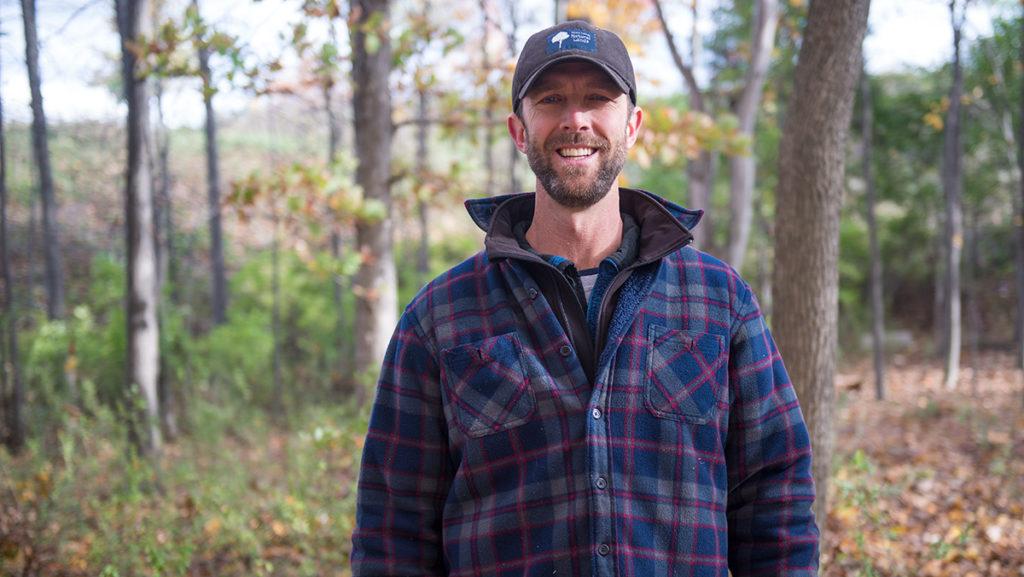Proposition 64 has passed in California this year, which legalizes marijuana for recreational use for people 21 years old or older. But this may not be healthy for the environment, according to research by Jake Brenner, assistant professor in the Department of Environmental Studies and Science at Ithaca College.
With the help of Van Butsic, assistant specialist of land systems science and conservation at the University of California Cooperative Extension, Brenner found that marijuana farms could have potentially detrimental environmental effects in high-growth areas like California, the state where the plant is most highly produced.
They published the first systematic survey — a detailed examination of an area to record the location and significance of archaeological resources — of cannabis farms, titled “Cannabis agriculture and the environment: a systematic, spatially-explicit survey and potential impacts,” in April. The study focused on illegal marijuana farms in northern California and how the production of the crop affects environmental variables such as water distribution and forest habitats.
Brenner said they conducted the research by using imagery of northern California from Google Earth and digitizing cannabis farms onto the images. The specific location mapped out was half of Humboldt County, which is one of the counties that makes up the “Emerald Triangle,” named after three counties in Northern California — Mendocino County, Humboldt County and Trinity County. It is estimated that 80 to 85 percent of the marijuana consumed in the United States is farmed in the Emerald Triangle, Brenner said.
The map data that Brenner and Butsic created was overlaid with secondary data from geographic information systems of other environmental variables, like endangered fish, roads, stream and slope data. GIS is computer mapping that uses spatial data from specific locations.
The research team discovered that even though marijuana does not require a lot of water or space to grow, the timing of irrigation and the locations of marijuana farms still create potentially harmful environmental impacts. For the sake of secrecy, marijuana farms are often grown in secluded areas of the forest, where the environmental impact is highest because of steep slopes, close proximity to critical habitats and land clearing of forests, which creates fragmentation — the chopping-up of intact forest parcels — Brenner said. The timing of irrigation of marijuana is detrimental because it occurs during mid to late summer, which is drought season in California. The critical habitat that is most affected is that of native fish populations, especially Chinook salmon, Coho salmon and Steelhead trout.
“It’s just sort of an unfortunate coincidence really,” Brenner said. “In and of itself, cannabis farming is not a high–impact land use, but the timing of it really matters for water use, the location of it really matters for other things like erosion, landslides and fragmentation. Those are the main reason why cannabis is getting a bad rap right now, environmentally.”
Kent Bueche ’15 worked on the research project in the spring of his senior year at the college. He said the subject interested him after he took a GIS course in the fall semester of his senior year. What surprised him most about the research was the sheer amount of marijuana being grown in Humboldt County, he said. Bueche said that the debate over marijuana legalization needs to shift its focus to the need to regulate the plant because of its increased presence in the country.
“I think it’s important, because it makes the debate not so black and white,” Bueche said. “I think most of the debate over marijuana legalization is whether it’s bad for you or whether it should be decriminalized, but what we really need to start looking at it from a regulation standpoint.”
During the spring semester of his senior year, Neal Anderson ’15 also assisted in Brenner’s research. He said he wrote his own paper that focused on the disconnect between state and federal laws regarding marijuana production.
“It was fascinating, the difference between federal and state law and how that impacted the agricultural industry, because on one side, you have the state law that allowed cannabis agriculture, and on the other side, you have the federal law that explicitly prohibited the agriculture, and you had this divide between the laws,” Anderson said.
Brenner said he hopes people start to recognize cannabis as an agricultural crop and policy makers start to regulate it like other crops. He said it is important to study marijuana agriculture because it helps to make well-informed and sound policy decisions.
“I honestly don’t care if marijuana gets legalized, but I’m very concerned about when it gets legalized, that we’re ready to measure the impacts of it,” Brenner said. “We have a chance to be ahead of the game, and we need to take it.”








